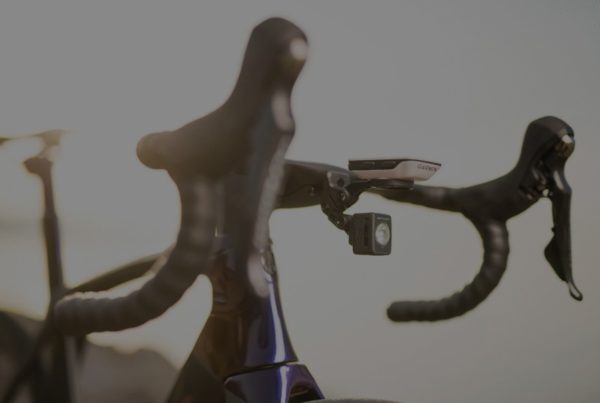Dear Bob,
Here’s a question for ya. I was wondering what the law is as far as in a group ride while crossing a street if the light changes to yellow then red with cyclists still in the street crossing: What is the law as far as a whole group crossing?
Are the riders required to stop or does the whole group continue until the group is through the crossing. I live in Arizona and in the Scottsdale area north of Phoenix the lights are so fast you just cannot get even a small group through a light. I was just curious as to what you could find to enlighten me. Thanks and you have a great column, I really enjoy reading it.
J. C., Arizona
Dear J.C.,
There are two approaches to answering to this question—one a legal answer, and one a common sense answer. Let’s start with the common sense answer. Let’s say you and the other members of your vintage car club are out for a Sunday drive in Scottsdale. The lead drivers make it through the intersection on green, but, due to the notoriously quick cycle of the traffic signals, some drivers are caught in the intersection as it turns red, and most of the club members haven’t even entered the intersection before the light turns. Do these drivers have to stop and wait for the next green light, or can they continue to proceed through the intersection until all club members have crossed?
It should be fairly obvious that the vintage car club members who haven’t entered the intersection on green would be required to stop at the red light and wait for the next green light, regardless of the fact that they’re all traveling together as a group. By common sense, the same rule should apply to the members of a bicycle club.
Now let’s look at the legal answer. In Arizona, “the driver of a vehicle shall obey the instructions of an official traffic control device applicable to the driver.”
In other words, drivers are required to, among other things, stop at red lights. Does that requirement apply to cyclists? By definition, a bicycle is not a vehicle in Arizona. However, as is the case in virtually every other state, “a person riding a bicycle on a roadway or on a shoulder adjoining a roadway is granted all of the rights and is subject to all of the duties applicable to the driver of a vehicle.”
Therefore, under Arizona law, cyclists are required to stop at red lights.
Some cyclists question this requirement, claiming that on a group ride, the group operates as one large vehicle, rather than several individual vehicles, and therefore, once the group enters an intersection, the entire group should be permitted to pass through the intersection.
This argument is wrong on at least two points. First, the requirement to observe traffic signals applies to every individual driver, rather than to groups of drivers. Second, the law specifically makes allowances for processions when those vehicles are part of a funeral procession. Apart from funeral processions and parades, both of which are activities requiring permits, the law requires every individual vehicle operator to observe the traffic signals.
So what’s a cyclist to do about those fast light cycles? If you haven’t done this already, I would recommend discussing the timing of the light signals with the city, for two reasons. First, the timing of those lights may be defective, and the city may be unaware of the problem. Second, even if the timing of the lights is not defective, the city may be unaware that the timing of the lights is creating a problem, and if you bring that to the city’s attention, they may be willing to work with your group to adjust the timing.
On a final note, I’d like to thank all of my readers who have contacted me to request my appearance at their event on my upcoming speaking tour. I will be speaking extensively in 2008, and will make plans to appear before any club, bike shop, or other engagement that is interested in hosting me. If you would like me to appear to speak at your event or shop, or to your club or group, please drop me a line at bookbob2speak@gmail.com. I’m looking forward to meeting as many of my readers as possible.
Bob
(Research and drafting provided by Rick Bernardi, J.D.)
This article, One Single Group (Ride), or a Collection of Individuals?, was originally published on VeloNews on December 6, 2007.
Now read the fine print:
Bob Mionske is a former competitive cyclist who represented the U.S. at the 1988 Olympic games (where he finished fourth in the road race), the 1992 Olympics, as well as winning the 1990 national championship road race.
After retiring from racing in 1993, he coached the Saturn Professional Cycling team for one year before heading off to law school. Mionske’s practice is now split between personal-injury work, representing professional athletes as an agent and other legal issues facing endurance athletes (traffic violations, contract, criminal charges, intellectual property, etc). Mionske is also the author of Bicycling and the Law, designed to be the primary resource for cyclists to consult when faced with a legal question. It provides readers with the knowledge to avoid many legal problems in the first place, and informs them of their rights, their responsibilities, and what steps they can take if they do encounter a legal problem.If you have a cycling-related legal question, please send it to mionskelaw@hotmail.com Bob will answer as many of these questions privately as he can. He will also select a few questions each week to answer in this column. General bicycle-accident advice can be found at bicyclelaw.com.
Important notice:
The information provided in the “Legally speaking” column is not legal advice. The information provided on this public web site is provided solely for the general interest of the visitors to this web site. The information contained in the column applies to general principles of American jurisprudence and may not reflect current legal developments or statutory changes in the various jurisdictions and therefore should not be relied upon or interpreted as legal advice. Understand that reading the information contained in this column does not mean you have established an attorney-client relationship with attorney Bob Mionske. Readers of this column should not act upon any information contained in the web site without first seeking the advice of legal counsel.



